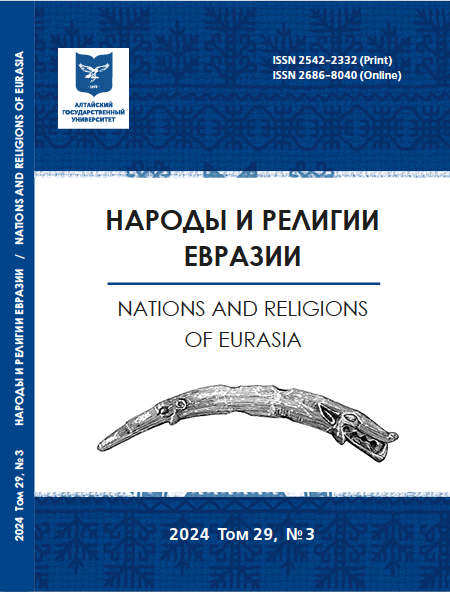An integrated study of the Neolithic child skeleton from Ust-Aleika-5 burial ground, Barnaul Ob region
Main Article Content
Abstract
This article presents the results of an integrated study of a child skeleton from Neolithic grave no. 2 at the Ust-Aleika-5 burial ground in the Upper Ob region. The estimated skeletal age at death is approximately 2 years ± 8 months. Notably, the cranium exhibits macrocephaly and an unusually large open anterior fontanel for this age group. The likely cause of the macrocephaly appears to be a form of hydrocephalus, although a precise paleopathological diagnosis remains challenging.
The osteometric measurements of the clavicles, scapulae, pelvis, and long bones generally align with the lower limit of the confidence interval for the dental age. Some postcranial dimensions suggest heterochronic biological development, potentially linked to the observed pathological condition. A 2D facial reconstruction was created based on the analyzed cranium, and cranial metric analysis, together with the dimensions of the reconstructed «adult» skull, indicates a probable male sex for the child skeleton.
Craniometric and dental non-metric traits suggest that the Ust-Aleika-5 individual is closely related to the autochthonous populations of central Eurasia, particularly those represented by Neolithic-Eneolithic cranial samples from regions such as the Middle Irtysh, Barnaul-Biysk, the Novosibirsk-Kamen Ob basin, and the Barabinsk forest-steppe, as well as the Aral Sea region. Additionally, dental anthropological analysis indicates a proximity between the Ust-Aleika-5 individual and the Neolithic populations of southern Western Siberia, specifically from the Baraba burial grounds and the foothills of the Altai-Sayan region. This analysis suggests that these populations retained characteristics of an earlier population predating the Neolithic era in southern Western Siberia, marked by a mild expression of «eastern» nonmetric dental traits and the enduring presence of archaic features.
Downloads
Metrics
Article Details

This work is licensed under a Creative Commons Attribution 4.0 International License.

